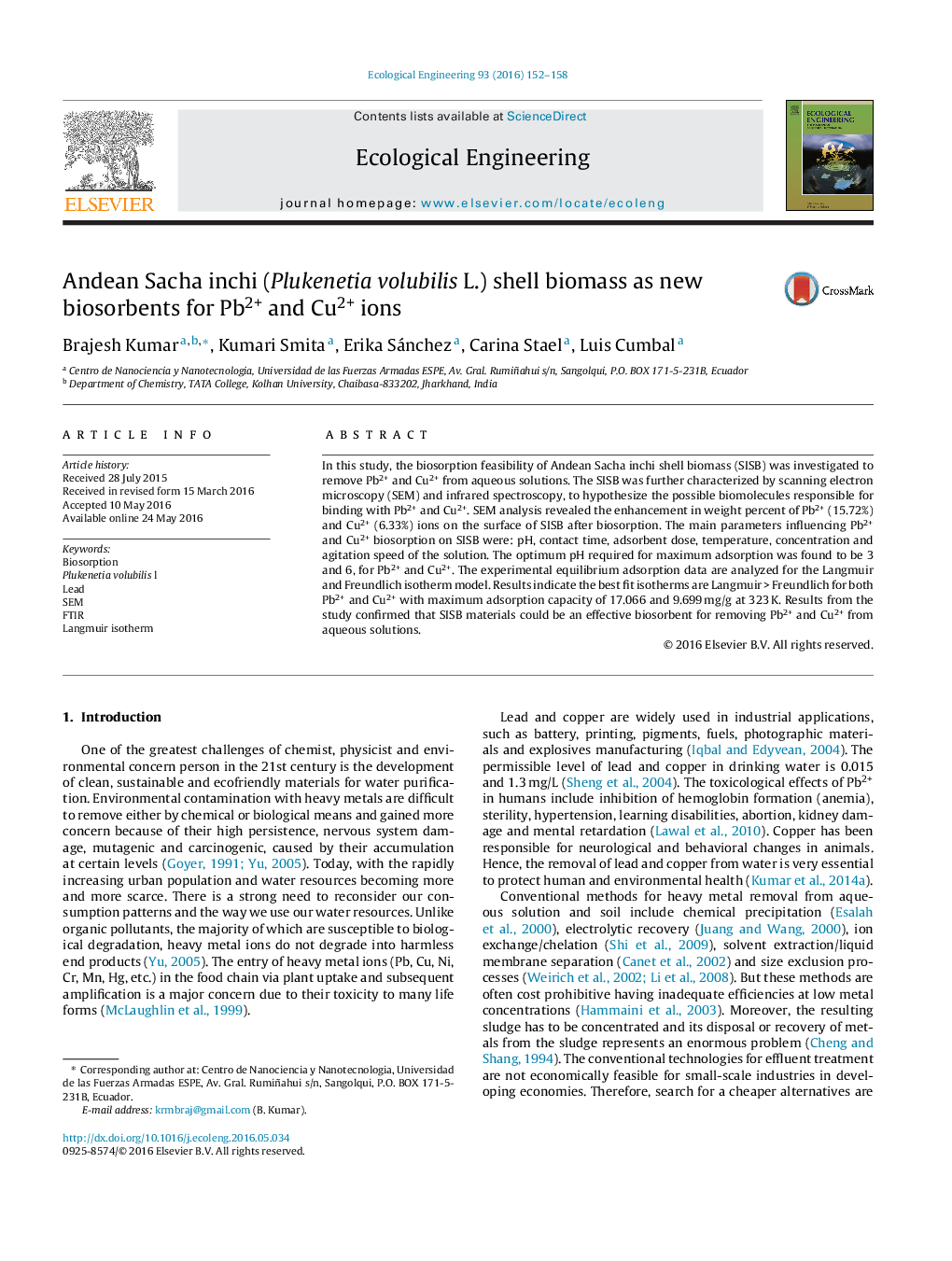| Article ID | Journal | Published Year | Pages | File Type |
|---|---|---|---|---|
| 4388724 | Ecological Engineering | 2016 | 7 Pages |
•The biosorption of Pb2+ and Cu2+ on SISB was investigated for the first time.•Pb2+ and Cu2+ with maximum adsorption capacity of 17.066 and 9.699 mg/g.•Pb2+ has higher selectivity of biosorption than Cu2+ on the surface of SISB.•The obtained results recommend this SISB waste as potentially low-cost biosorbent.
In this study, the biosorption feasibility of Andean Sacha inchi shell biomass (SISB) was investigated to remove Pb2+ and Cu2+ from aqueous solutions. The SISB was further characterized by scanning electron microscopy (SEM) and infrared spectroscopy, to hypothesize the possible biomolecules responsible for binding with Pb2+ and Cu2+. SEM analysis revealed the enhancement in weight percent of Pb2+ (15.72%) and Cu2+ (6.33%) ions on the surface of SISB after biosorption. The main parameters influencing Pb2+ and Cu2+ biosorption on SISB were: pH, contact time, adsorbent dose, temperature, concentration and agitation speed of the solution. The optimum pH required for maximum adsorption was found to be 3 and 6, for Pb2+ and Cu2+. The experimental equilibrium adsorption data are analyzed for the Langmuir and Freundlich isotherm model. Results indicate the best fit isotherms are Langmuir > Freundlich for both Pb2+ and Cu2+ with maximum adsorption capacity of 17.066 and 9.699 mg/g at 323 K. Results from the study confirmed that SISB materials could be an effective biosorbent for removing Pb2+ and Cu2+ from aqueous solutions.
Graphical abstractFigure optionsDownload full-size imageDownload as PowerPoint slide
